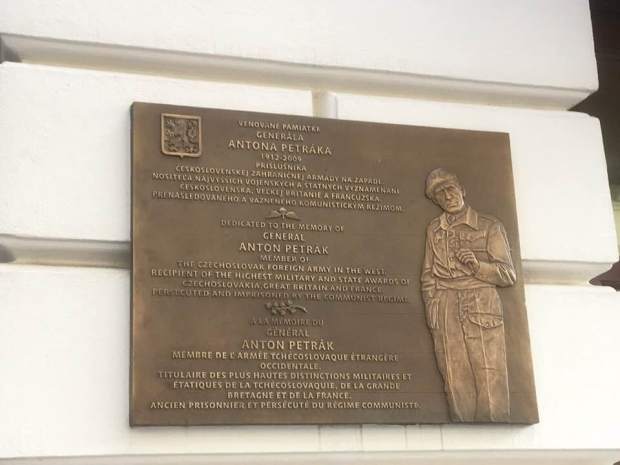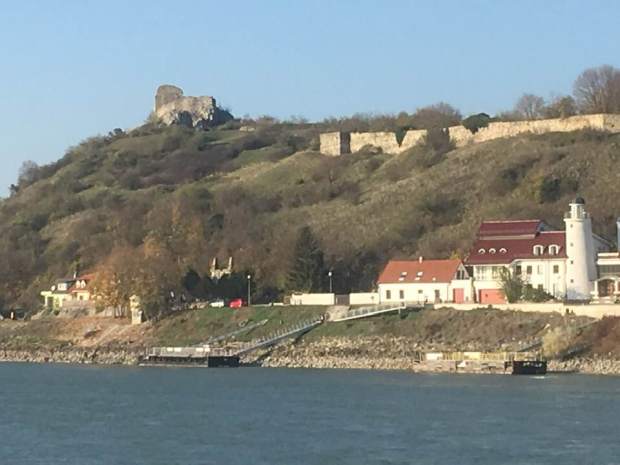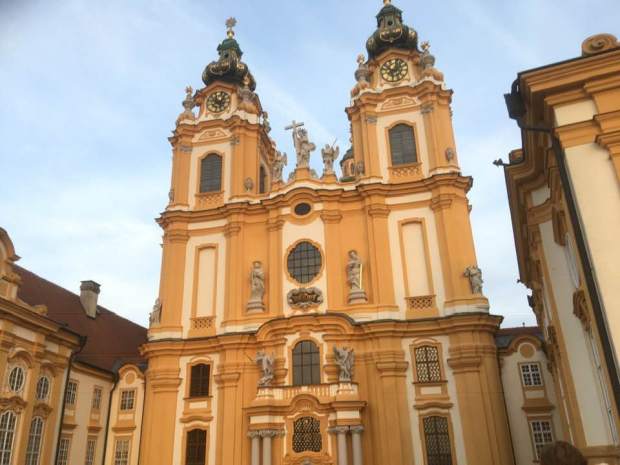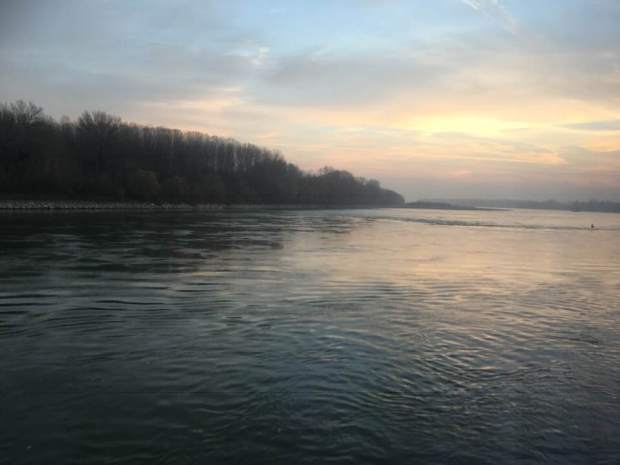Archive for category First World War
Danube Diary
Posted by cathannabel in Brexit, First World War, History, Personal, Second World War on December 16, 2018

I wouldn’t have expected, even a few months ago, to have been sailing up the Danube on a luxury floating hotel. But my 90 year old father, who is partially sighted and deaf, needed a companion for his chosen cruise holiday, and, well, someone had to step up to the plate. Someone had to take one for the team. And it was fabulous.
The chances that I’ll ever be able to do it again are remote but if I could, I would, and if you can, do. (Riviera Travel, highly recommended (no, I’m not on commission…) – everything fantastically well organised, and the boat fantastically well appointed).
We arrived in Budapest on Day 1, too late to do any more than enjoy looking at the city lights as we had dinner. And then the real magic thing about a river cruise – you nod off to sleep and when you wake up you open the curtains to somewhere new.

Ezstergom, once the capital of Hungary, and now known for its basilica, the top of which apparently is and must by law remain the highest point in the country. Then onwards, and from Hungary to Slovakia, and its capital city, Bratislava.

That November afternoon as we sailed on up river it was unseasonably warm, and we sat out on the sun deck. The river was so quiet, all we could hear was the low hum of the boat’s engines, and the splash of the cormorants’ wings as they skimmed the water. I can’t remember when I last felt such peace.
On the cabin TV there was a channel which just showed the view from the camera on the front of the boat, all day and night. I took to leaving it on as I fell asleep, loving the tranquillity. (It was also reassuring when we were going through some huge locks, and things got a bit bumpy).

The first view of Bratislava from our mooring point was less than prepossessing, but the old city is beautiful. And part of the fascination of these cities that once lay behind the Iron Curtain is the juxtaposition of utilitarian concrete blocks from the Communist era with the rich baroque heritage. Many of the plaques in Bratislava commemorate the Second World War rather differently to those in Western Europe, mainly recording the heroism of the Red Army that liberated them from the Nazis. But others record the corrective to that simplistic version of history, as with this memorial to Anton Petrak:

For a history buff with a particular obsession with WWII and the postwar period, this stuff is obviously richly fascinating. And our local guide added to the story, with his parents’ memories of the Prague Spring, and of how after the fall of Communism the country split (‘without so much as a referendum’, our guide said, in one of many ironic Brexit references during the trip).
I’ll go back to Bratislava, if I can, and explore properly.
Onwards. En route, on the sun deck again, we glimpse a castle on the shoreline, Devin castle.

We slip quietly into Austria. Next stop Durnstein. We’ve lost the sun now, it’s a bit misty in the morning, which means the photos don’t do justice to the cruel crags above the village, and the ruined castle. (According to legend, Richard II of England was imprisoned there, and his loyal minstrel Blondel found him by singing outside the fortresses of Europe until he heard Richard joining in. Well, I did say it was a legend).



Durnstein is gorgeous, beautiful old – really, really old – buildings, and a fabulously ornate church. Back to the boat for lunch and on to Melk Abbey.

No photos allowed inside, but a really fascinating tour of a very imaginatively organised museum within this still functioning Benedictine abbey.
Next day we are moored at Linz. We’ve been forewarned that we’re going to be double parked, so we don’t fling open our curtains in the morning inadequately clad, only to see the passengers on another boat staring back. Another misty morning.

Some of our group go for a tour of Linz, but we board a coach and head off to Salzburg, which is just as fascinating and picturesque as I would have imagined.
It’s also my first sight of Stolpersteine, literally stumbling stones, plaques set into the cobbles of the city, commemorating those of its citizens who were murdered by the Nazis, usually adjacent to the houses where they lived. There are over 70,000 of these across Europe, and whilst some cities have rejected this particular way of commemorating the victims of the Holocaust, the project has prompted them to find alternatives, ways of giving back to those people the names and the homes and the stories that the Nazis took from them, along with their lives.



These two Stolpersteine commemorate Catholic priests who were murdered by the Nazis. Father Gottfried Neunhauserer died at Schloss Hartheim, used by the Nazis for their T4 euthanasia programme, and the place where thousands of prisoners from Dachau, Ravensbruck and Mauthausen were taken to be gassed. He’d been a patient in Salzburg-Lehen mental hospital from 1920, and was taken to Hartheim in 1941 where he was murdered.
Brother Jakob Furtsch was murdered in Ravensbruck in 1943. He’d been expelled from his abbey in 1942, and went back to his home town, Neuensee, where he was arrested as a dissident and deported to Dachau, then to Ravensbruck.
We also saw plaques for Rudolf Erich Muller, a Catholic convert arrested as a Jew in November 1938, deported to Vienna and then to Theresienstadt where he was murdered, and Karl Rinnerthaler, a school janitor, who died in 1948 due to the injuries he’d received in various prisons, after his arrest in 1942 as a member of the illegal Austrian Revolutionary Socialist resistance group.
So through chance, in just a small area of the city, we encountered these stories which convey so much about the Nazi horror. A victim of Aktion T4, a worker who took part in resistance activities, a Jew and a Catholic dissident.
We’d sailed straight past Vienna on our way to Linz, so now we head back there.

Obviously, there is no possibility of doing justice to Vienna in the time we have, though our guide is (as they all have been) well informed and does a brilliant job of showing us as much as we can in the time. I will have to come back some time.

That evening we have a classical string quartet performing on the boat. Yes, they do play the Blue Danube waltz (I guess it was a contractual obligation) but also some Mozart and Haydn. I quite fancied a bit of Schoenberg but there you go… More seriously, it was lovely, and well pitched for the audience. (My father has fond memories of a previous Danube cruise where there were such concerts on board most days, as well as musical outings in several of the cities they visited, including one in Vienna with the orchestra all in full 18th-century costume. )
We’re on the last leg now. Onwards to Budapest. But the low water levels which have been causing problems for river traffic means that we aren’t going to get there in time for a proper visit, so instead we dock again at Esztergom and get a coach to Budapest, whilst our boat carries on (less heavy laden!) without us, to meet us again for our last night on board after we’ve toured Budapest.
Despite this, the daylight is already fading once we have the chance to walk around the city. We look around Heroes’ Square, and then on to the Fisherman’s Bastion, a neo-Gothic/neo-Romanesque terrace which provides a wonderful vista of the old city, as the lights come on. Then we’re back to the boat for a gala dinner, and a performance of Hungarian folk music and dance to mark our final evening.


We didn’t get to see the Shoes on the bank of the Danube due to the rescheduling of that final day. Our Hungarian tour manager couldn’t speak of this, of its history and meaning, and of the fact that people still leave flowers there, without choking up. I will record it even though I didn’t see it for myself.

Film director Can Togay and sculptor Gyula Pauer created this memorial on the east bank of the Danube. Many Hungarian Jews were murdered even before the Nazis occupied Hungary in 1944. But in those last months of the war, as the Red Army surrounded Budapest, the murder of those who remained was regarded as an urgent priority, hampered by the fact that they could no longer deport to the death camps. So, with the help of the fascist Arrow Cross militia, 3,500 people, including 800 Jews, were taken to the banks of the river, ordered to take off their shoes, and shot, so that they fell into the river.
This trip has been full of such contrasts. The picturesque alongside the reminders of genocide. The Communist concrete blocks alongside the baroque. If I get the chance to come back to these cities, it’s these contrasts that I will want to explore. I want to find the Stolpersteine in all of these cities, as I sought out the plaques on the walls of Paris that tell of resistance and persecution. In these cities that embody our notions of culture, of beauty, of civilisation, people were rounded up, herded into ghettos, deported to camps and murdered because they were Jews, or Roma, or gay, or communist, or because they opposed the murderous ideology that would destroy people because of who they were. That history is ever more vital, as so many European nations seem to be drawn to nationalism and xenophobia once again.
It was poignant to be in Europe on the centenary of the Armistice, and to recall that the young men in those three nations who would be commemorated would have all fought against ‘us’. I thought of this again watching Kevin Puts’ opera Silent Night at Leeds Town Hall, which portrayed the 1914 Christmas truce through the voices of German, French and Scottish soldiers.

And I thought, with sadness and anger of how our union with all of those European nations is portrayed as something that oppresses and exploits us, rather than something from which we gain immeasurably, economically and culturally and in so many other ways. And I so wanted to dissociate myself from my government (and opposition) and from so many of my compatriots as our tour managers and guides made reference to Brexit, ironically, regretfully, in bafflement and in hurt.


So if I can I will go back, to Bratislava, Budapest, Vienna, and wander around in the way I enjoy, looking for the places where history bubbles up into the present.
I’d also love to go back on the river though, to recapture that sense of peace.

The Somme: they went over the top one hundred years ago this morning
Posted by cathannabel in Events, First World War on July 1, 2016
A fine piece to commemorate the slaughter on the Somme, from Gerry Cordon’s That’s How the Light Gets In blog.
At 7.30 on a sunny morning one hundred years ago today more than sixty thousand British soldiers, each with a bayonet rifle in his hand, began climbing out of their trenches along a 13-mile front and walked towards the German line. By nightfall 20,000 British soldiers were dead. In just a few minutes whole communities in Britain had been devastated. This was the start of the Battle of the Somme. It went on, with little gain, for nearly half a year. By then, more than a million men were dead or wounded, making it one of the bloodiest battles in human history.
View original post 533 more words
